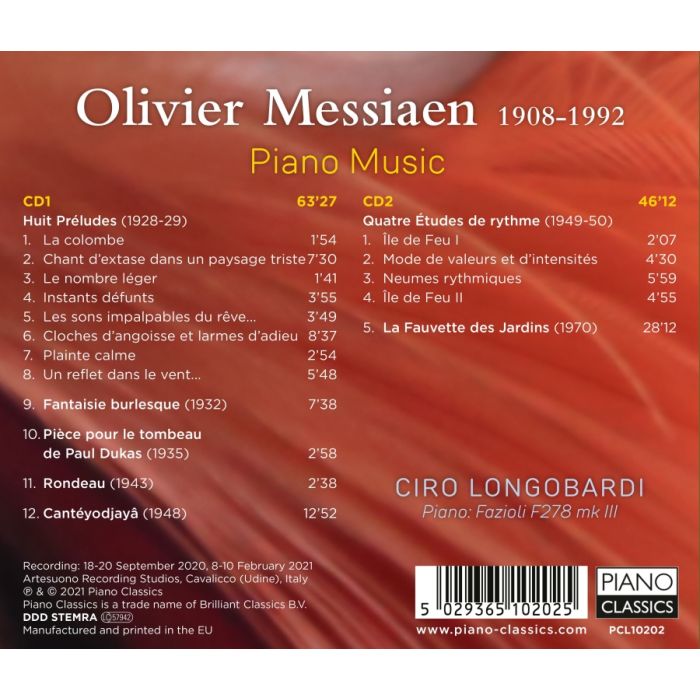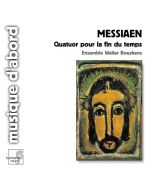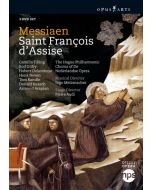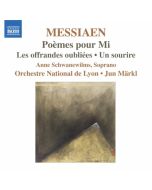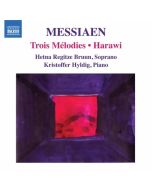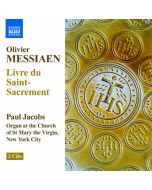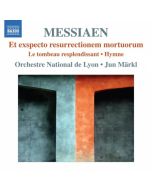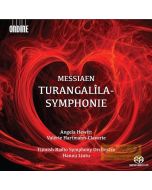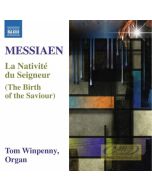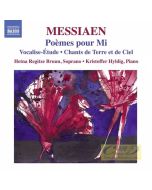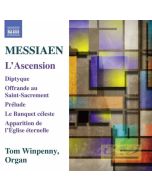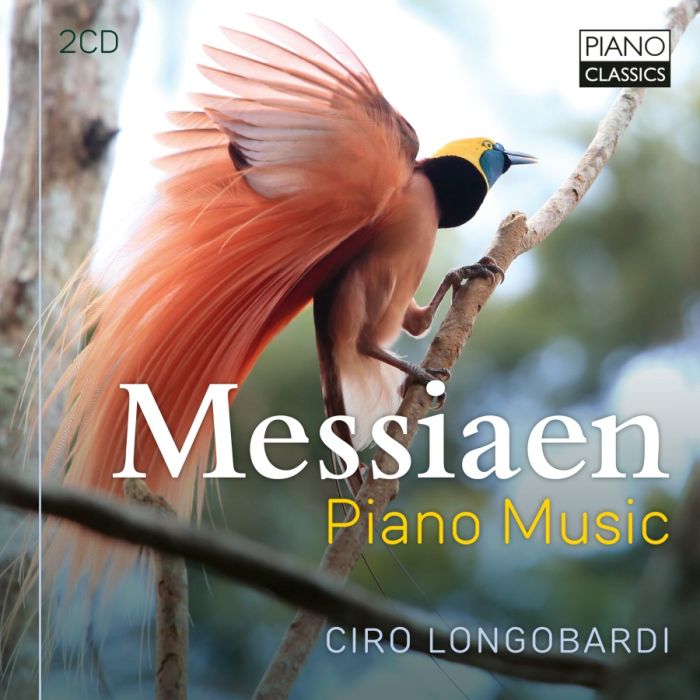
(Produkt nie został jeszcze oceniony)
kompozytor
Messiaen, Olivier
tytuł
Messiaen: Piano Music
wykonawcy
Longobardi, Ciro
nr katalogowy
PCL 10202
opis
This box set presents a selection of piano works composed by Messiaen over the span of more than 40 years. In comparison with the great cycles of Vingt regards sur l'enfant-Jésus and Catalogue d’Oiseaux it might seem like a simple collection of scattered pieces but nothing could be further from reality: these works, due to their complexity of conception and depth of inspiration, can fully stand alongside those monuments, and are widely acknowledged as turning points in the history of Western compositional thinking.
It is easy to recognize Debussyian origins in the Huit Préludes (1928-29), with regard to the choice of form, the titles and the use of ambiguous and suspended harmonies. However, these pieces already sound as Messiaen’s music unmistakably does, thanks to the composer’s particular sensitivity to color and harmony. Cantéyodjayâ - a pseudo-Sanskrit word - composed in 1948, is a complex and articulated piece marking the composer's involvement in the study of Hindu rhythms, and the entry of serial writing into his music. The radical change in piano writing is also clear in the Quatre Études de rythme (1949-50). The two Île de Feu (Isle of Fire) are dedicated to Papua New Guinea, so the themes “have all the violence of the magical rites of that country”. La Fauvette des Jardins is the last of Messiaen’s bird pieces (not part of Catalogue d’oiseaux), the culmination and landmark of Messiaen’s ornithological inspiration.
• This is the second instalment of Messiaen’s piano music by Italian pianist Ciro Longobardi, a specialist in contemporary repertoire. His previous recording of Catalogue d’Oiseaux received excellent reviews, a.o. a 5-star review in French Diapason.
nośnik
CD x 2
wydawca
Piano Classics
data wydania
2.09.2021
EAN / kod kreskowy
5029365102025
89,00 zł
Produkt na zamówienie
Wysyłka ustalana indywidualnie.
Darmowa wysyłka dla zamówień powyżej 300 zł!
Darmowy kurier dla zamówień powyżej 500 zł!
sprawdź koszty wysyłki